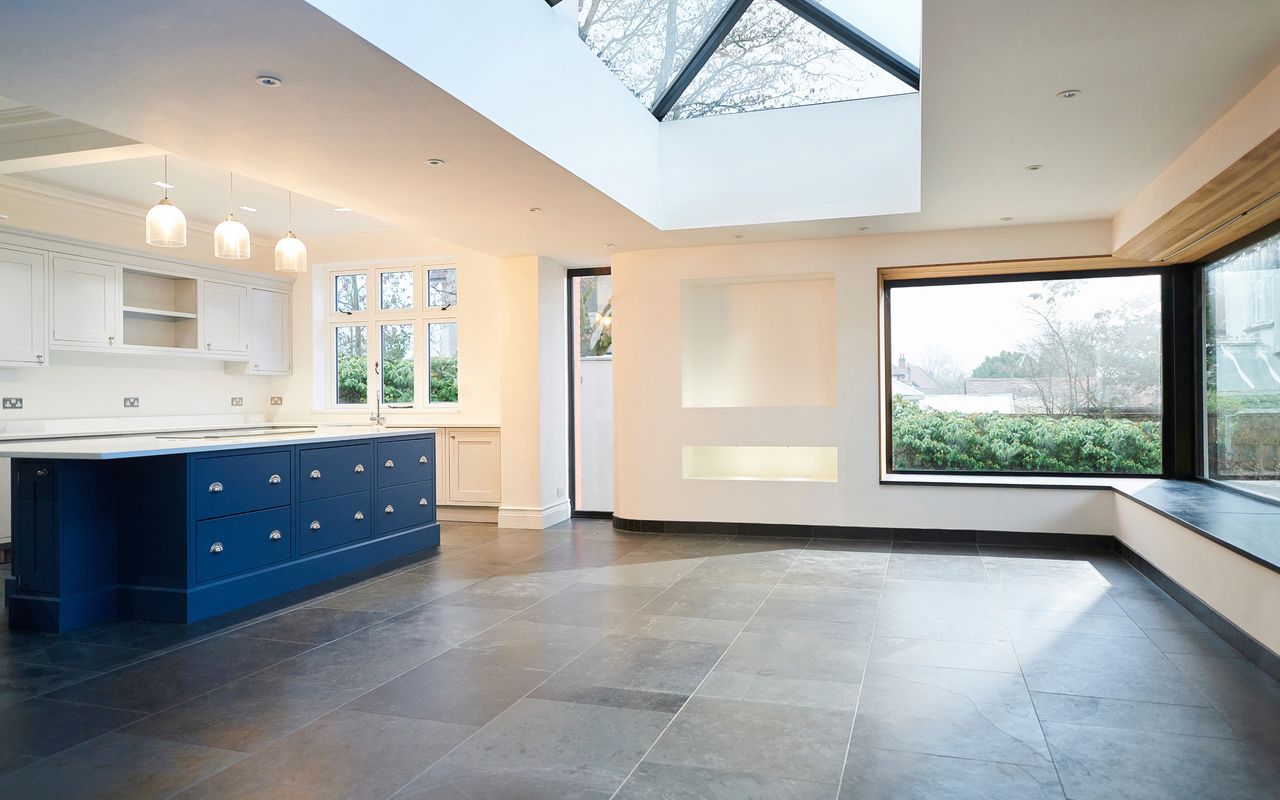Extend the kitchen or create space for a new bathroom
Good design requires the retention of an existing building’s hierarchy of forms, details, and construction logic. This is key to achieving an extension that feels naturally integrated. Part of the design process is the need to balance other crucial factors such as scale, materials palette, cohesive aesthetic and impact on your building and the surrounding setting; setting is particularly important within or near conservation areas and other listed buildings.
To add much-needed space without compromising historic integrity, consider how to maximise the retention of historic materials. It may also involve partial demolition. I’m experienced in negotiating with planning authorities about the benefits of accommodating functions in an extension, which would otherwise be intrusive in the host building.
Architectural colleagues confirm the benefits of having a heritage consultant attend a project inception site visit. This enables discussion about constraints and options for maximising opportunities to enhance spaces at the earliest stage of planning and design. Bathrooms and en-suites are as popular as extending and reconfiguring kitchens and dining areas.

Change internal floor plans
Adapting the internal layouts of heritage assets can improve usability. Achieving this while respecting the historic layout requires an understanding of different aspects of significance and creative problem-solving to work within the existing building envelope. An appreciation for the original floor plans and evolving historic spaces is essential to enable effective reconfiguration that preserves character.
In the UK, historic building fabric is a type of significance that needs to be preserved as a priority. Retaining original walls, ceilings, and architectural details aids our understanding of the building’s historic context, maintaining its unique character. These features preserve the hierarchy of primary and ancillary spaces, and preservation avoids fragmentation of principal interiors.
Archways, staircases, mouldings, and original room configurations often need to be retained even as new openings or partitions are constructed to enhance functionality. Be aware, even the best planning renovations can uncover the unexpected. Uncovering concealed historic features as part of the works may add unforeseen complexity. If this happens, you’ll find that skilled designers can reimagine layouts in a manner synergistic with the existing historic character.
Retaining the original ceiling heights is ideal where possible. For example, where ground floor ceiling heights are too low ground floor levels may be lowered rather than undertaking a wholesale internal reconfiguration: I worked on a project where this turned out to be the best option. If insertions are required, minimal visual impact should be ensured. Otherwise, exposing original structural elements to reintroduce a sense of volume can beautifully reveal a building’s heritage. These decisions need to be balanced against consequential energy efficiency.


No Responses